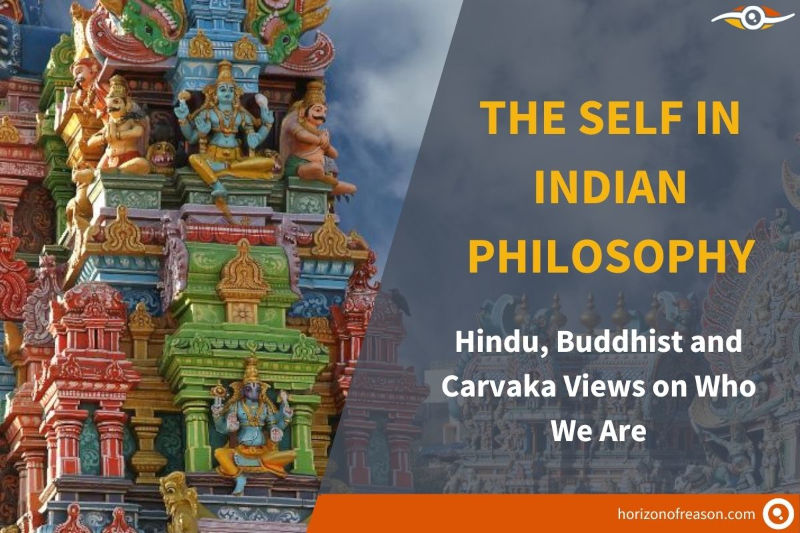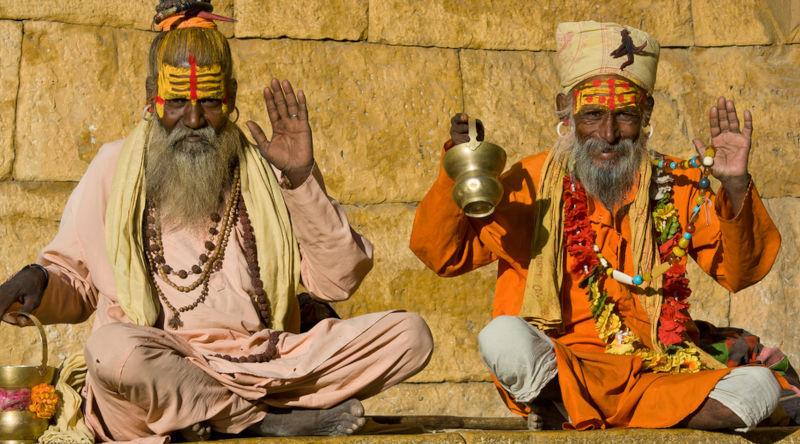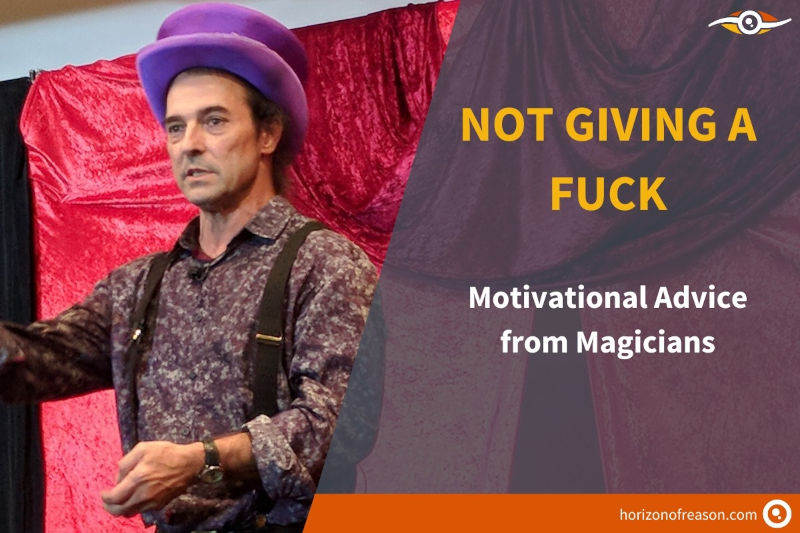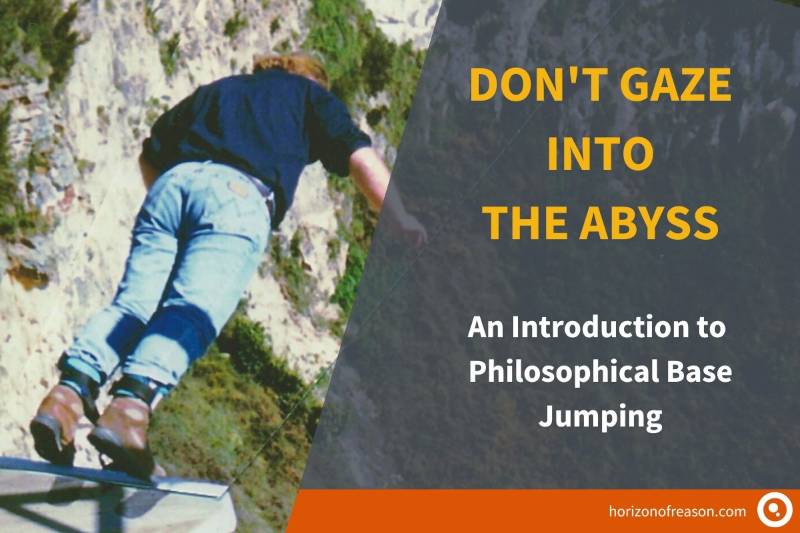
The Self in Indian Philosophy: Hindu, Buddhist and Carvaka views

Peter Prevos |
3286 words | 16 minutes
Share this content
About half a century ago, many young people from Europe and the United States travelled to India to find themselves. These people journeyed thousands of miles along the Hippy Trail in the hope that some ancient Indian wisdom would help them to discover their true selves. These truth-seekers were not always as clear about what it was they were looking for as it is not easy to bring under words what it is they were looking for. What is this true self that apparently can be found in India? This essay discusses some of the views of the self in Indian philosophy in line with contemporary scientific ideas.

The Self in Indian Philosophy
Classical Indian philosophy consists of three leading schools. The ancient Brahminical Hindu views from the Vedas form the foundation of Indian thought. The later Buddhist school of thought started a new tradition that spread around Asia and the world. The third school represents the not so well-known materialists of the Charvaka tradition.
The Brahminical or orthodox (astika) schools of Indian philosophy argues that the self or Atman is a substantial but non-material entity. The Katha and Chandogya Upanishads, for example, define the Brahminical conception of the self as:1
The light of the Atman, the spirit is invisible, concealed in all beings. It is seen by the seers of the subtle when their vision is keen and bright … The Atman is beyond sound and form, without touch and taste and perfume. It is eternal, unchangeable, and without beginning or end: indeed above reasoning. An invisible and subtle essence is the spirit of the whole universe. That is Reality. That is Truth. THOU ART THAT.
The Brahminical view on the nature of the self as portrayed in the Upanishads supports four central theses:
- The self exists.
- The self is immortal and without beginning or end.
- The self is essentially non-material.
- The self is identical with Brahman, the highest reality.
The heterodox (nastika) schools in Indian philosophy, such as the Charvaka materialists and the Buddhists, question the Brahminical arguments for a substantial, persistent and non-material self on metaphysical, moral and political grounds. The Buddhists and the Charvaka oppose the Hindu caste system. They believe that the Vedas are full of falsehoods, self-contradictions and tautologies.
The Charvaka accuse the Brahmins of being impostors who abuse the words of the Vedas and interpret them to suit their own selfish needs. The Vedas are, in their opinion nothing but a means of livelihood for the Brahmins who are lazy, lacking in intellect, energy, self-respect and sense. The following quote by Hindu philosopher Sankara illustrates the Charvaka and Buddhist views on the self:2
The soul is but the body characterised by the attributes signified in the expressions, 'I am stout', 'I am youthful', 'I am grown-up', 'I am old', etc. It is not something other than that. A sentient being does exist, you think, O Mara? You are misled by a false conception. This bundle of elements is void of self, in it, there is no sentient being. Just as a set of wooden parts receives the name of carriage, so do we give to elements the name of fancied being.
Existence of the Self
Advaita (non-duality) is the Vedanta school associated with the philosopher Sankara (c. 788–820 AD) who is acknowledged as the leader of the Hindu revival after the Buddhist period in India. The foundation of Sankara's metaphysics is that reality is that whose negation is impossible. From this criterion follows that the self is real because no one will say "I am not". Sankara writes, reminiscent of Descartes' famous cogito ergo sum:
Just because it is the self, we can't entertain the idea even of its being capable of refutation.
The Nyaya-Vaisesika subscribe to a concept of the self in the Vedas as a substantial, persistent and non-material entity. They agree with the Vedantins that the self can not be perceived, but only inferred. The later Nyaya school, however, rejected the idea that the self can only be known by inference and asserted that the existence of the self can be directly perceived. The idea that the self can be directly perceived is put forward by Udayana in a polemical work against the Buddhists.
The Nyaya argument for the existence of the self through agency: "From the actions of the mind towards the contact of the sense-organ apprehending desirable objects, we infer the existence of the self". An analogy offered by the Nyaya is that from the action of regular breathing, we infer the existence of the agent who would act as a blower of the wind-pipe. The Nyaya are clearly referring to intelligent actions and not merely the mechanical ones as those of a biological robot.
The Charvaka argue that the self is nothing but the body as characterised by consciousness. The Charvaka denial of a substantial self is based on the epistemological position that perception is the only valid source of knowledge. The Charvaka deny the validity of inference and other sources of knowledge (darsanas) usually accepted in classical Indian philosophy. From this position and the Brahminical assertion that the self can not be perceived they infer that the self can not exist because only that which can be perceived exists.
This last premise is, however, not a fair representation of the Brahminical position because the Mimamsa and the later Naiyayikas insist that the self as the subject is directly cognised in every experience. In the available texts, there is however no detailed discussion of whether the Charvaka had any arguments to deal with the Mimamsaka and the later Naiyayikas.
The Buddhist reply to the Brahminical view of the self would be that there is no such entity. This view is illustrated by the debate between King Milinda and the Buddhist monk Nagasena.3 King Milinda is not convinced of the theory of the not-self for, "if there were no person, there could be no merit and no demerit …". Nagasena clarifies the idea of the not-self to the king by comparing a human being with a chariot. None of the individual parts of the chariot (the pole, the axle, the wheels etc.), are the chariot. Nor the combination of the components is the chariot. Nagasena continuous that he can not discover a chariot at all, only the word that denotes the idea of the chariot. The denomination chariot — or self — takes place independent of the individual parts. In ultimate reality, the person can not be apprehended.
The hippies of the past would thus be quite disappointed by either the Buddhists of the Charvaka. The Hindu views of the self do acknowledge its existence. Still, they only infer that it exists without penetrating the mystical realms of getting to know your true self.
Properties of the Self in Indian Philosophy
The debate on the existence of the self is inseparable from a description of the nature of the self. The Vedic scriptures mention three properties of the self. The self is eternal, non-material and is identical with Brahman: the ultimate reality.
The eternity of the self follows, according to Sankara, from the essential irrefutability of its nature. Sankara is claiming here that since the self is not an effect, it has no beginning or end and is therefore eternal. The Buddhist would dispute this argument because they believe that anything that is not caused does not exist.
Sankara argues for the immateriality of the self. He states that the existence of an eternal, immaterial self, distinct from the body is a necessary presupposition for the achievement of liberation. The scriptures would otherwise make no sense, which is an unacceptable conclusion for the Vedantins. This argument is obviously unacceptable to the heterodox schools because they do not accept the scriptures as a source of valid knowledge.
The Naiyayika use an argument from language to ascertain that the self is distinct from the body. The Nyaya argument from language encompasses that since the word "I" is used in the Vedas and ordinary talk. Since everything in the Vedas is true, the term "I" must refer to an existing entity. They hold that the word I must refer to a non-physical entity: "If the notion I referred to the body, then just as another man's body being as perceptible as our own body … the other man's body would also be capable of being spoken of as I". No perceptible property and thus no physical property of an individual can be used to identify a person uniquely and the referent I must therefore be something non-physical.
The persistence of the self is induced by the Naiyayika through the argument from memory. We have desires for objects that have been experienced in the past as being pleasant. One cannot desire a thing one does not remember, and one can not remember someone else's experiences. They argue that there must, therefore, be a continuously existing self who had the experience in the past, and who is desiring it in the present.
The materialists only accept the four elements — air, water, fire and earth — as the basic building blocks of reality and ultimate facts of the universe. The body is to the Charvaka a unique combination of these elements, and the self emerges from these elements. They thus account for the higher principle of mind by the lower one of matter.4 The views of the Charvaka have been fervently opposed by the other schools of thought (darsana) in classical Indian philosophy. It is clear from the materials at our disposal that Charvaka philosophy was viewed with far greater disrespect than any other darsana. Phil Hari Singh argues that there appears to be an underlying hostility towards the Charvaka that is not entirely borne out by the analysis of their doctrines.5
To the Buddhists, a person is not a single substance existing continuously through time. The self is a series of physical and mental states, also called 'person states'. The Buddhist term for an individual suggests the difference between the Buddhist view and other theories, is santana, which means a stream. Each person state consists of various psychological and physiological factors, the skandhas. These skandhas are not persistent in time but last only for one infinitesimal period.
The person states fleet away, and they give rise to new person states in an endless cycle of cause and effect. Because every single person state only exists for a tiny period, there can not be a persistent self. The instantaneous succession of skandhas gives the impression of continuity, like the succession of twenty-four still images per second provide the illusion of a moving image.
Sankara's criticism against the Buddhist theory of momentary person states is that in the absence of a permanent self throughout the successive skandhas, what sense can we make of memory and recognition? Sankara writes that:
"Remembrance means recalling to mind something after its perception, and that can happen only when the agent of perception and memory is the same …".
Contemporary Discourse on the Self
The contemporary discourse on the self is predominantly physical in character. Physicalism in the philosophy of mind is the view that consciousness and the self can be described and explained by the laws of physics. This section evaluates the Indian perspectives on the self in light of the physicalist philosophy of mind.
In a recent paper, C. Ram-Prassad offered some suggestions on how classical Indian philosophical material may contribute to current discussions in consciousness studies.6 This contribution is problematic because the goal of moksa is incompatible with the purposes of physicalist consciousness studies. Ram-Prassad proposes to exclude the transcendental elements of the philosophy through 'interpretative compromise'. The role he sees for Brahmanic philosophy in contemporary consciousness studies is a profound critique of the chief aims. The main critique that the Brahminical philosophy offers to the physicalist consciousness studies is the circularity of the physicalist studies. Only when we know what it is that is to be studied, we can examine it, but the purpose of the study is precisely to understand what it is.
The self of the Charvaka can be viewed as an epiphenomenon, an incidental product of physical processes that has no effect of its own. The Charvaka theory of the self seems elegant but does not offer a satisfactory explanation of the self. The study of the Charvaka philosophy is, however, particularly tricky. We are left with only a few fragmentary survivals of the Charvaka. Still, all these are preserved in the writings of those who wanted only to refute and ridicule it. Charvaka philosophy thus remains to be reconstructed from the inherently hostile references to it.
The hermeneutic difficulties in Charvaka philosophy prevent it from playing a role in contemporary discussions on the self. Derek Parfit identifies two contemporary theories of the self.7 On the Ego Theory, a person's continued existence can not be explained except as the continued existence of a particular ego or subject of experiences. The ego theory explains the self like the Brahminical theories as an enduring spiritual substance. The opposing view is the Bundle Theory according to which we can not explain the unity of consciousness at any time by referring to a person. Instead, we must claim that there exist a long series of different mental states and events. In Bundle Theory, the self is only a fact of our grammar. Parfit calls Buddha the first bundle theorist and states that given the advances in psychology and neurophysiology, the Bundle Theory, and thus the Buddhist theory of the self may now seem to be obviously true.
Ethics and the self
The metaphysical beliefs that we hold depend on our ethical convictions and vice versa, ethical convictions provide the motivation for upholding certain metaphysical beliefs. Personhood is one of the underlying assumptions in moral philosophy. In bio-ethics, struggles over abortion, animal rights and brain death have brought personhood to the forefront.
The ongoing debate on embryonic stem cell research illustrates this belief. The basic principle in this debate is that no human being can be sacrificed for the well-being of another human being. The issues surrounding embryonic stem cells centre on the question at which point in the development of a human embryo one can speak of a person. Suppose the lump of cells that forms the embryo is not considered a person. In that case, there are no moral objections against using these cells in favour of advancement in medical science.

If these cells do constitute a person, then the basic principle prohibits the use of this person for medical research. This example illustrates that a theory of the self is required to be able to determine an outcome in this moral dilemma. The Brahmanical theory of the self as a substantial and non-material entity would hold that any living organism with the potentiality to become a human has a soul and is, therefore, a person. The Brahmanical theory of the self and the subsequent ethical views would, therefore, render embryonic stem cell research immoral. The classical Hindu materialist philosophy of the Charvaka does not totally deny the existence of the self for it is an emergent property of the physical body. The Charvaka answer to the moral dilemma of embryonic stem cell research would be that the young embryo is not a person. The material configuration of the fetus is not complex enough to produce a self.
The Buddhist totally denies any self and would, therefore, agree without reservations with embryonic stem cell research. In an earlier paper, I have argued that the Buddhist conception of the self can not be upheld because a denial of the self would lead to ethical nihilism. The problem for Buddhist ethics has always been why should people be moral if there is no actor. If there is no self or other, how can there be karmic consequences, responsibility, loyalty or even compassion?
Derek Parfit rejects the existence of continuous selves and consequently, working for the future welfare of all beings is the same as working for one's future well-being, since there will be no 'I' to benefit in the future. This interpretation of anatta would favour embryonic stem cell research. Most Buddhist commentators have however adopted classical Hindu teachings that the transmigration of consciousness occurs at conception, and therefore that all abortion incurs the karmic burden of killing. We need Parfit's mild interpretation of the theory of the no-self to be able to offer a Buddhist solution to moral issues such as embryonic stem cell research.
Conclusion
The brief for this essay is to indicate who is right in the classical Indian debate on the existence and nature of the self. Truth is a state of correspondence with empirical reality and agreeance with physicalist theories of the self. Any theory of the self also has to be able to support a sound moral doctrine.
The views of the self in classical Indian philosophy span a broad spectrum of ideas. For the Brahmins, the self is a non-physical soul, a Rylean' ghost in the machine'. For the Buddhists, the soul is a mere figment of the imagination. The Charvaka, on the other hand, see the self as an epiphenomenon.
The Brahminical theories of the self can be considered invalid because the spiritual conception of the self does not correspond with empirical reality—if one concedes that religious experiences are not part of reality. The theory is, however, capable of giving a clear answer on moral issues in bio-ethics, as shown above. The Charvaka theory could be correct, but as is known to us, it can not provide any explanation, only a description of the self.
The Buddhist theory of the self explains our natural intuitions without any of the metaphysical complications of the Brahmanical theories. The theory of the no-self needs, however, to be interpreted mildly to be able to reply to the moral dilemmas in bio-ethics as Parfit has suggested.
We are still a long way away from a satisfactory physicalist theory of the self. Roger Penrose even argues that we need an extension of our present-day scientific understanding to be able to explain the phenomena of the mind in physicalist terms.8 The Buddhist denial of the self as a substantial entity is a counter-intuitive step. It will require a Copernican Revolution in common sense thinking to be entirely accepted. This evolution in human thinking was envisaged in 1885 by Friedrich Nietzsche, who was through Arthur Schopenhauer inspired by Indian Philosophy:9
"Body am I and soul" —thus speaks the child. And why should one not speak like the children? But the enlightened one, the knowing one says: Body am I totally and fully, and nothing else; and soul is but a word for something to the body.
Notes
Juan Mascoró, The Upanishads (Penguin Books, 1965).
Monima Chadha, Topics in Indian Philosophy (Churchill: Monash Philosophy, 1998).
Edward Conze, Buddhist Scriptures (London: Penguin Books, 1959).
M Hiriyanna, The essentials of Indian Philosophy (Delhi: Motilal Banarsidass Publishers, 2000).
Phil Hari Singh, 'A history of the Charvakas' (April 2002, defunct website).
C Ram-Prasad, 'Saving the self? Classical Hindu theories of consciousness and contemporary physicalism', Philosophy East & West 51 (July 2001).
Derek Parfit, 'Divided minds and the nature of persons', in Colin Blackmore and Susan Greenfield, editors, Mindwaves. Thoughts on intelligence, identity and consciousness (Oxford: Basil Blackwell, 1987).
Roger Penrose, Shadows of the mind. A search for the missing science of consciousness (Oxford: Oxford University Press, 1994).
Friedrich Nietzsche, 'Also Sprach Zarathustra (Thus spoke Zarathustra)', in: Friedrich Nietzsche. Das Hauptwerk, volume III (Nymphenburger, 1990), p. 34. Translation by the Peter Prevos.
Share this content


